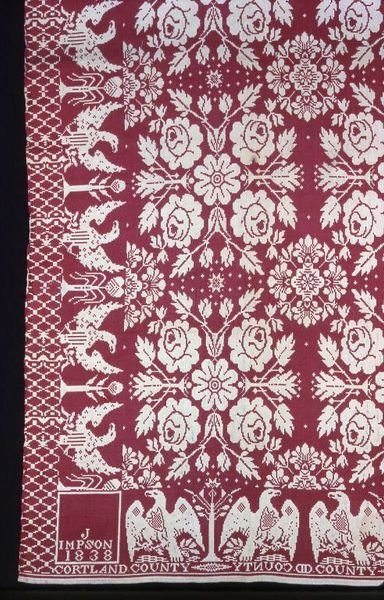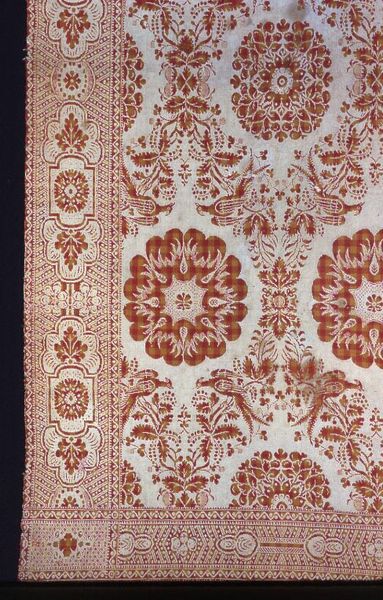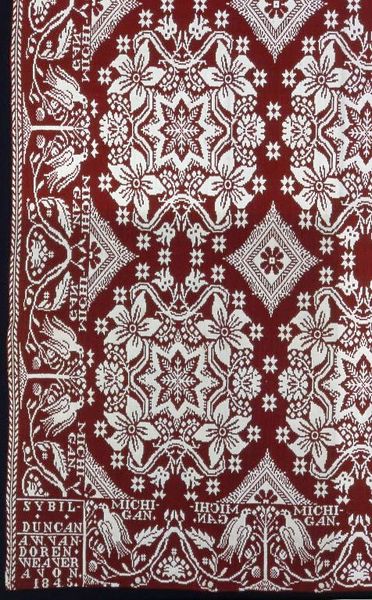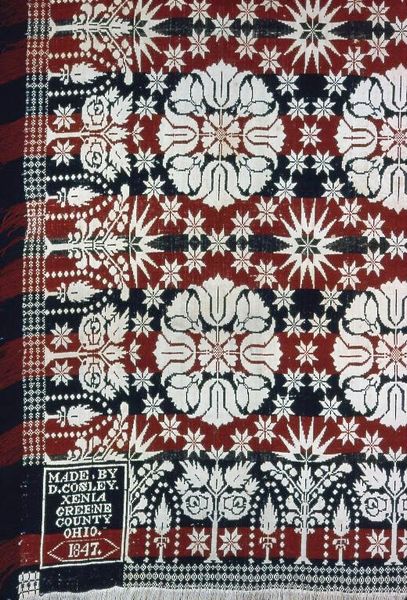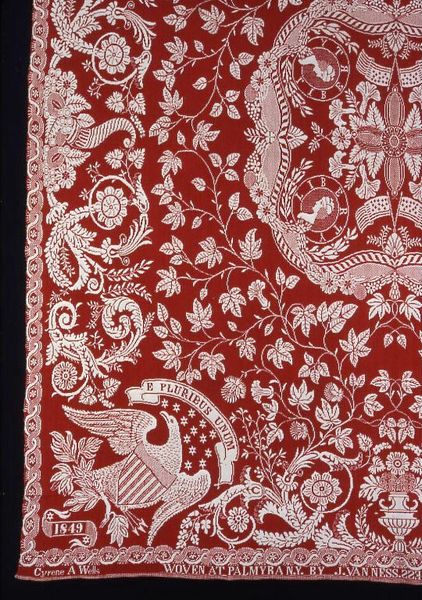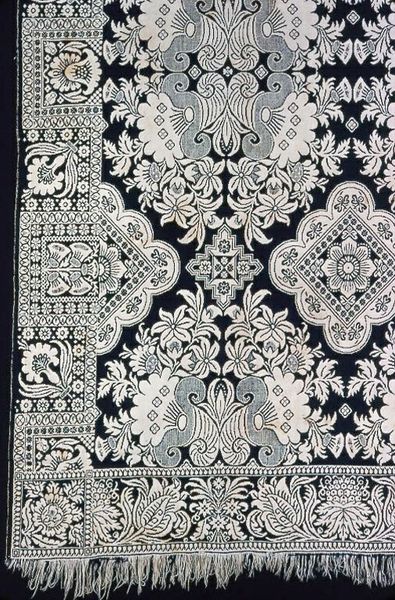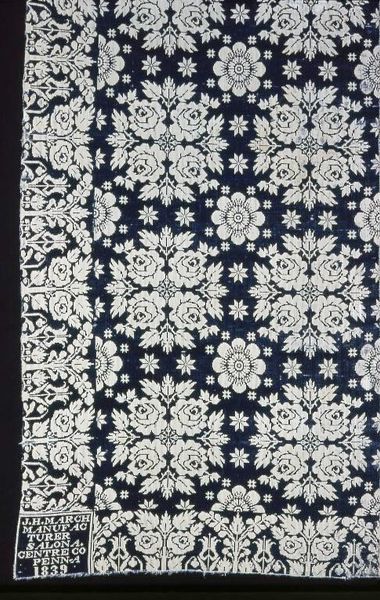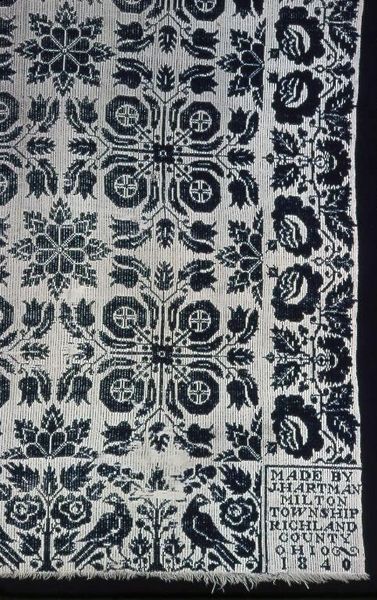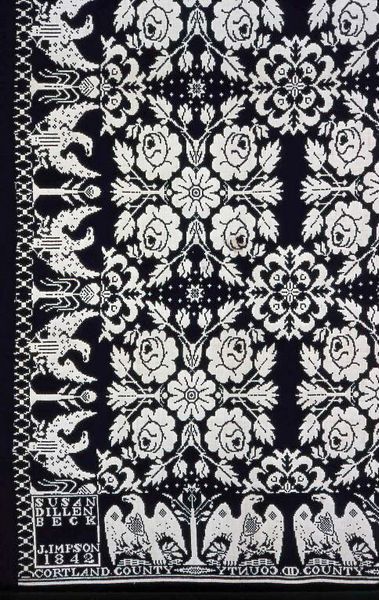
fibre-art, weaving, textile
#
fibre-art
#
weaving
#
textile
#
flower pattern
#
intricate pattern
#
decorative-art
Dimensions: 228.9 × 201.5 cm (90 × 79 1/4 in.)
Copyright: Public Domain
Editor: This is a "Coverlet," made in 1841. It's currently held at the Art Institute of Chicago and was made by Charlotte Purchase Thornton using woven textile. It’s absolutely covered in a beautiful red and white floral pattern! It feels incredibly intricate, almost dizzying. How do you interpret this work, particularly within its historical context? Curator: Well, immediately, the "Coverlet’s" creation in 1841 sparks consideration of the socio-economic landscape and women's roles. Weaving, traditionally a domestic activity, offered women a creative outlet, a means of economic contribution. Think about the cultural and social positionality of women at the time and what this object might communicate beyond pure aesthetics. What might the act of weaving, and the choice of specific patterns, convey about their lived experiences, their aspirations, or even their resistance? Editor: That makes me consider it as an expression, rather than just a functional object. Could the intricate pattern, all those intertwined flowers, also be seen as a form of coded communication or storytelling, perhaps expressing themes or narratives relevant to women's lives that couldn't be voiced directly? Curator: Precisely. The labour involved speaks to dedication, skill, and, perhaps, even a quiet rebellion against prescribed gender roles. And how does the pattern-and-decoration aesthetic play into this? It’s often dismissed as purely decorative, but in many cultures, it’s a deeply symbolic form of expression, right? Think of Gee's Bend Quilts and what it represents in African-American history. Editor: Definitely. So, seeing it that way transforms it from a pretty object into a powerful statement. Thank you! I’m going to think about all that— domestic labor, women’s roles, and quiet acts of rebellion— the next time I look at any piece of textile art. Curator: And that's where art truly comes alive: in understanding the intertwined narratives of art and life!
Comments
No comments
Be the first to comment and join the conversation on the ultimate creative platform.

